- Home
- Alex Berenson
The Prince of Beers (Kindle Single) Page 2
The Prince of Beers (Kindle Single) Read online
Page 2
In 1969, Susan Busch, the Third's first wife and the mother of August IV and his sister Susie, filed for divorce. Susan alleged that August III "nagged and criticized her conduct and found fault with her without cause… and used profane and humiliating language toward her," according to Under The Influence: The Unauthorized Story of the Anheuser-Busch Dynasty. (Written by two Post-Dispatch reporters and published in 1991, Under The Influence is the definitive history of the first 130 years of the Busch empire.)
Five years later, Busch III remarried. His second wife, Virginia Lee Wiley, was a tall, beautiful blonde, like Susan. Busch III and Virginia had two children of their own, while The Fourth and Susie lived with their mother. The Third took his son to board meetings and distributorships, making sure that the Fourth knew he was the heir apparent. Otherwise, III treated IV as distantly as anyone else. Busch IV told Fortune in the 1997 piece that the relationship between father and son was "almost all business." But The Fourth got plenty of pleasure elsewhere.
* * *
Monday, Dec. 20, 2010. 2:30 p.m.
Autopsies are grisly affairs, the reduction of the human body into its component parts, heart and lungs and liver extracted and weighed like so many specialty meats. All modesty disappears. In his examination of Adrienne Nicole Martin's corpse, deputy St. Louis County medical examiner Michael Graham noted dispassionately that "the breasts are prominent due to the presence of implants. The genitalia is unremarkable. The pubic hair, for the most part, has been shaved."
Yet Adrienne's corpse gave up its biggest secret even before Graham cut her open. She had a quarter-inch hole in her septum, the skinny piece of cartilage and bone that separates the nostrils. You'll want pictures of this, Graham told Ford, the Frontenac detective, who was watching the autopsy. Graham ran a pick in one of Adrienne's nostrils and out the other to show that the hole extended through Adrienne's septum. Ford made sure to get a photo. What's going to cause a hole like that? Ford asked Graham, a highly regarded coroner who has written several pathology textbooks.
The answer: Snorting cocaine. Not for days, or weeks. For months on end.
* * *
Sunday, Nov. 13, 1983. Just past midnight.
The boy with a thousand toys loved everything speedy: cigarette boats, Harleys, planes. Now he had a new go-fast, a slick black Corvette fresh off the dealer's lot. Girls dug it. He'd brought it with him from St. Louis to Tucson, where he was studying at the University of Arizona's engineering school.
Studying. Yeah, right.
He spent nights at Dirtbag's, this bar near school where the manager let him jump the line. The place was pretty cool. Cheap drinks and plenty of girls, including a sweet-looking bartender named Michelle. She was tall, pretty, blonde, with a tight body. She liked to smoke weed, wasn't afraid of a little blow. Okay by him. He loved to party. And he could drink like a machine. Five, six, seven cocktails and a bunch of beers, sack out, do it again the next night. Iron livers ran in the family.
So: just another Saturday night. He hit a disco called Viola's. Michele was there, taking the night off from Dirtbag's. He was drinking vodka collinses, basically spiked lemonade, a little girly but they did the trick. The drinking age in Arizona was 19, which was nice, meant he didn't have to use his fake ID. Of course he'd pregamed with some Bud Lights, didn't want to start the night cold. By the time Viola's shut at 1 a.m. he was feeling no pain. He and Michele and their friends weren't done partying. Not even close. They decided to convoy up, head home. Michele would ride with him in the 'vette.
Things got blurry after that...
* * *
When Pima County Sheriff's Department deputy Ronald Benson arrived at August Busch IV's Tucson apartment the next morning, he found a scene eerily similar to the one that Frontenac officer Scronce would see in Huntleigh 27 years later. A semiautomatic rifle lay at the foot of Busch's bed. A loaded sawed-off shotgun sat on a nearby table. Busch himself appeared dazed, his head and chest spattered with blood, according to Under the Influence, whose authors extensively interviewed Benson.
Busch told the deputies that he couldn't remember what had happened the night before. He thought he might have pulled over and slept beside his car. The truth was very different. Busch's Corvette had wrecked on a sharp curve on River Road in rural northeast Tucson. The accident had thrown Michele Frederick through the sunroof and into a tree. She broke her neck and died at the scene. Busch walked away from the accident and flagged a ride to his apartment. He didn't mention what had happened to the Good Samaritan who took him home.
The deputies arranged an ambulance to take Busch to Tucson General Hospital. Along the way, he admitted drinking "quite a bit" the night before. He said he'd had one or two vodka collinses, as well as several beers. A waitress at Viola's, and people who'd been with him, said that in reality Busch had drunk as many as seven vodkas in his four hours at the disco. The Corvette was littered with empty cans of Bud Light. But Busch insisted he'd been safe to drive, and some people with him said he hadn't appeared drunk.
At Tucson General, doctors treated Busch for a fractured skull, and took blood and urine samples for a potential criminal case. Five days later, Deputy Benson asked an Arizona court to measure the samples for alcohol and other drugs. Benson said the sheriff's department had found probable cause to believe that "the crime of manslaughter had been committed," according to Under the Influence. The judge agreed. But Tucson General couldn't find Busch's urine sample, and it had damaged his blood sample. Suddenly investigators couldn't prove exactly how drunk Busch had been on the night of the accident. A week after the accident, Busch was released from the hospital. He flew home to Missouri and refused to speak further with investigators.
The sheriff's office pursued the case, even sending Benson to St. Louis after getting a court order to take more blood samples from The Fourth. A friend of Michele's said Busch had been driving unsafely. But the Busches fought back, bringing in highway engineers to examine the curve where the accident had happened, hiring lawyers to fight requests for evidence. On July 6, 1984, after an eight-month investigation, prosecutors in Tucson announced they would not bring criminal charges. The circumstantial evidence showed that Busch was driving, they said. But Busch's claim of amnesia was credible because of his skull fracture, and even if they proved he was speeding, they could not prove that he had been driving drunk or had used other drugs, they said.
So The Fourth escaped prosecution in Michele Frederick's death. He stayed in Missouri and eventually graduated from St. Louis University, a private Jesuit institution. As years passed, Busch always denied knowing what had happened that night, or even whether he'd been driving. "I had a bad head injury. I don't remember that part of my life," he told Fortune in 1997. But he did remember that prosecutors hadn't charged him. "They couldn't prove blame." Later, Busch IV told BusinessWeek that the accident might even make him a smarter executive. "As painful as that memory is, the experience will make me a better keeper of responsibility for our products."
But Michelle's death — and a 1985 incident in which St. Louis police shot out a tire of Busch's Mercedes following a high-speed chase — left a taint on Busch that never disappeared. Even minor legal indiscretions will derail an executive's career at most big publicly traded companies. The Fourth's problems were far more serious, and the higher he climbed at A-B, the louder the whispers of nepotism became.
And at his most vulnerable moment Busch, too, would admit that the death in Tucson still haunted him.
* * *
When it comes to troubled American cities, Detroit gets the press, but St. Louis is hardly better off. In 1950, the city had 850,000 people. In 2010, it had 320,000. Like other Midwestern industrial cities, it suffered from middle-class flight, failing schools, and lurid crime. In 2010, only New Orleans had a higher murder rate among the 100 largest American cities.
Along the way St. Louis's biggest companies fled or were taken over. McDonnell Douglas sold itself to Boeing, May Department Stores to Federat
ed. Southwestern Bell moved to San Antonio and eventually became AT&T. A century before St. Louis had been the fourth-largest city in the United States, a worthy rival to Chicago, 250 miles north. These days it scrapped for business with towns like Nashville. Its confidence had plunged along with its population. A few days before I arrived in St. Louis, McClellan wrote a column in the Post-Dispatch headlined, "What's wrong with us? Too hot to say." He speculated that the city had always been doomed because it had been settled by pioneers too lazy to go further west. He was joking, but the fact that the Post-Dispatch mocked its hometown so openly was telling.
Anheuser-Busch was the best antidote to the city's inferiority complex. It employed thousands of people in jobs prized by both blue- and white-collar workers. The Busches rewarded loyalty and long hours with above-market salaries. But the company's local influence went far beyond its economic impact. People around the world knew The King of Beers, the Clydesdales, the red wagons. Along with the Gateway Arch, the Anheuser-Busch brewery is the city's top tourist attraction. A mile south of downtown, the brewery is an attractive campus of red-brick buildings. It could pass for a retro apartment complex if not for the smell of roasted malt that hangs deliciously in the air. Hundreds of thousands of people visit each year to see the Clydesdales, walk past the giant fermenting tanks and bottling lines, and sample a beer or two.
Of course, other cities have their own hometown champions, some larger than A-B. Atlanta will always be known for Coke, Cincinnati for Procter & Gamble. But Anheuser-Busch was a family as well as a company. The Busches played a unique role in St. Louis. The city and its suburbs have long suffered from an identity crisis. Geographically, St. Louis is located at the boundary of the Midwest and the South. But it's still only a two-hour flight from New York. It has an excellent private university, Washington U. Some of its wealthier citizens fancy themselves as transplanted Boston Brahmins, sending their children to Ivy League schools, summering on Cape Cod.
Not the Busches. They had no interest in the East Coast's effete pleasures. They faced south and west. They hunted ducks at a Missouri farm known as the Shooting Grounds and bigger game at a ranch maintained by Anheuser-Busch in Montana. They loved NASCAR and nitro-fueled drag racers. On summer weekends, they flew their helicopters and planes to the Lake of the Ozarks, the drinkin', fishin', and misbehavin' capital of the red states. They had messy divorces and nephews older than their uncles. Their genealogy looked like the Saudi royal family tree, with Adolphus Busch playing King Abdul-Aziz. Gussie, who ran A-B from 1946 to 1975, was a profane, skirt-chasing tyrant with eleven children by four wives. As one of those fancier Missourians told me, the Busches were Appalachia with a few billion dollars.
The family's messes might not have played in the leafy, wealthy precincts around Forest Park, but lots of folks in St. Louis didn't mind a bit. If anything, the problems humanized the Busches. Gussie in particular had been adored — someone told me that his unofficial title had been "King of the Peasants." Further, while the Busches weren't quick to give away their own fortunes, the brewery's corporate largesse was legendary. St. Louis churches, charities, and civic groups all counted on A-B.
The ultimate example of the relationship between company and town is a zoo called Grant's Farm, which Anheuser-Busch operates on a Busch family-owned estate in the western St. Louis suburbs. Aside from a $12 per vehicle parking charge, the zoo is free — the best bargain in town. Like the brewery, Grant's Farm even offers free beer. To make sure that everyone understands who's responsible, signs around Grant's Farm — even now — feature the slogan, "From our family to yours."
* * *
Sep. 27, 2006.
The day had finally come. All those years shaking hands with distributors, giving speeches at wholesaler conventions. All those years learning the business so he didn't sound like an idiot when the Wall Street guys asked their questions. He'd even gotten married. They'd all wanted him to get married, prove that he'd put his partying days behind. He'd never been able to pull the trigger. In 1990, he and Judy had been engaged. They'd even set a wedding date. A few years later, his girlfriend Sage had moved from California to be with him. "Sage Busch," he'd joked. But Judy and Sage had both come and gone.
He'd done it now, though. A few weeks before, he'd married Kathryn Thatcher, a pretty, deeply private 25-year-old blonde from central Vermont with a marketing degree from Boston College. She was quiet and reserved, not like most of his girls. Sure, he hadn't entirely committed to her, not exactly. He doubted one woman would ever be enough for him. But he'd made Kate his wife, lawfully wedded her in the eyes of God, the state of Missouri, and, most importantly, the board of directors.
In return they'd given him the company that he loved. And something more: They'd given him the chance to prove himself once and for all to The Chief. "
August Busch IV, chief executive of The Anheuser-Busch Cos., St. Louis, Missouri.
Had a ring, didn't it?
* * *
A-B had faced a clear crisis when The Third kicked out his father in 1975. When he handed power to his son a generation later, the company's problems were less obvious but just as real. Anheuser's business in the United States topped out in 2002. The company had driven its weaker competitors to the brink of extinction and gobbled their market share. The major breweries that remained, Coors and Miller, were powerful enough to stop A-B from gaining further sales at their expense. Anheuser found itself capped at about 50 percent of the American beer market.
Meanwhile, Busch III focused so heavily on the fight for market share that he failed to react to broader changes working against his company. Even as the United States population grew, beer consumption was flat. The real growth in the American alcohol market was happening at the high end, especially in hard liquor, which had huge profit margins. With its powerful relationships with distributors, Anheuser might have been a natural partner for a big distilled spirits company. But the company never moved into the liquor business. Nor — aside from buying half of the Mexican beer company Grupo Modelo — did Busch III invest in major international expansion.
As the years passed, industry analysts debated why Busch didn't act. The explanation appeared to be a combination of financial — A-B feared overpaying for foreign breweries — and personal. Busch III's obsession with security and need to micromanage left him uncomfortable doing business too far from St. Louis. Whatever his reasons, his strategy left A-B low on growth prospects by 2002, when he officially passed the company's reins to Patrick Stokes, his most trusted lieutenant. Over the next four years, Anheuser's American market share and profits slipped.
By 2006, Anheuser-Busch clearly needed new blood at the top, executives who would reconsider its strategy. Maybe it needed to push into energy drinks and bottled water. Maybe it should bid for a wine or spirits company, or make an international acquisition. Those choices would have hurt Anheuser's short-term profits, but a respected chief executive might have convinced the company's shareholders they would pay off in the long run.
Instead, the board of directors gave the job to The Fourth, who had mostly been confined to the marketing department during his twenty-one years at A-B. He'd had hits and misses along the way; in the early 1990s, he'd overseen the launch of Bud Dry, whose slogan, "Why Ask Why? Try Bud Dry," was not exactly genius. Anheuser eventually dropped Bud Dry, but the failure didn't stop Busch's ascent. Later he encouraged his father to approve the three frogs "Bud-Weis-Er" campaign, which analysts considered a success. He'd also spent years cultivating A-B's relationships with wholesalers and distributors, which in plain English meant hanging out and partying with them — whether at the Lake of the Ozarks, off the coast of Florida, or at a ranch in Montana. An important skill, sure, but Busch IV had little experience in finance, manufacturing, or the international markets crucial to the company's future. He had been a heavy drinker for two decades. He rarely had less than three drinks a day, and often he had many more. Analysts and journalists questioned whether he was up to the
task. He was caught in a Catch-22. He had to overhaul Anheuser to succeed. But until he succeeded he wouldn't have the necessary credibility to make a dramatic overhaul. Making matters worse, his dad stayed on Anheuser's board and kept meddling. In 2008, The Fourth told The Wall Street Journal that he had considered buying an energy drinks company but that his father opposed the deal, which went nowhere. The Third even tried to stop his son from picking his own executives.
So Anheuser spun its wheels through 2007 and the first half of 2008. Then the Brazilians at InBev called.
The Fourth promised he wouldn't sell, but he had little choice. By 2008, the Busches owned less than 5 percent of the company that bore their name. After a lost decade, shareholders were in no mood to listen to more promises of better times ahead. Anheuser tried to rally politicians against the takeover, but its argument that beer was a strategically vital product that had to remain American-owned went nowhere.
To keep A-B independent, Busch IV had only one option, buying the half of Groupo Modelo it didn't own already. Anheuser didn't have enough cash on hand to buy Modelo, so it would have to issue billions of dollars of bonds to do the deal. The debt would interfere with InBev's plans to issue its own new debt to buy out A-B's shareholders. Essentially, by messing up its own good credit, Anheuser could stop the InBev takeover.
Julie Macintosh, a reporter for the Financial Times, chronicled the fight in her engrossing 2011 book Dethroning the King: The Hostile Takeover of Anheuser-Busch, an American Icon. Among other tidbits, Macintosh reported that investment bankers involved in the deal christened Busch III "Crazy" and IV "Lazy," because The Fourth so often seemed disconnected at crucial meetings. What outsiders didn't know was that by the spring of 2008, the stress of trying to run A-B had left Busch IV prone to panic attacks. To try to stay calm, he was taking heavy doses of the prescription anti-anxiety medication Xanax, a strongly addictive and often abused drug that can cause listlessness, slurred speech, and confused thinking.

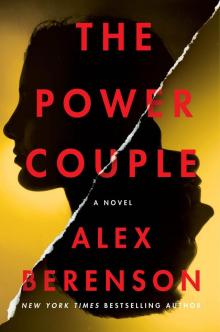 The Power Couple
The Power Couple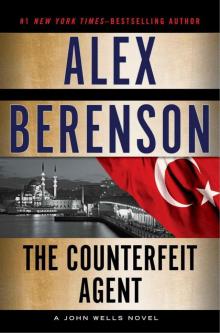 The Counterfeit Agent
The Counterfeit Agent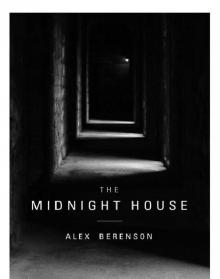 The Midnight House
The Midnight House The Prisoner
The Prisoner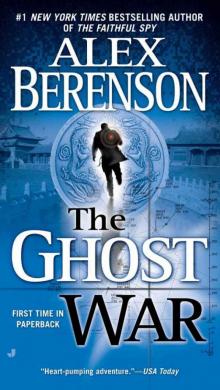 The Ghost War
The Ghost War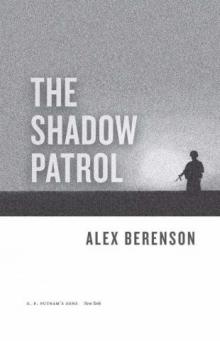 The Shadow Patrol jw-6
The Shadow Patrol jw-6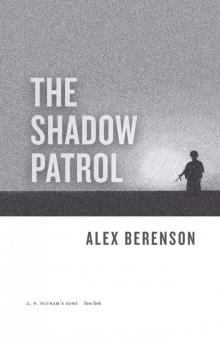 The Shadow Patrol
The Shadow Patrol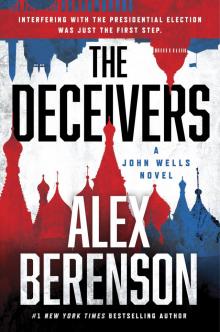 The Deceivers
The Deceivers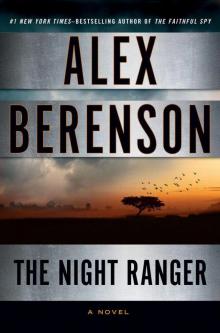 The Night Ranger jw-7
The Night Ranger jw-7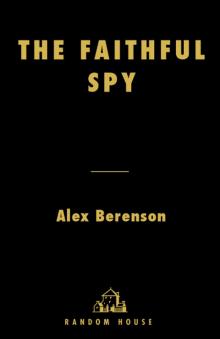 The Faithful Spy
The Faithful Spy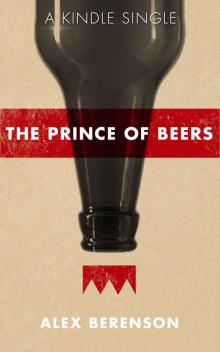 The Prince of Beers (Kindle Single)
The Prince of Beers (Kindle Single)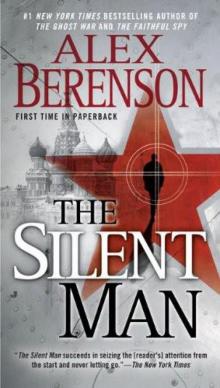 The Silent Man jw-3
The Silent Man jw-3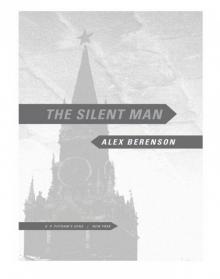 The Silent Man
The Silent Man The Wolves
The Wolves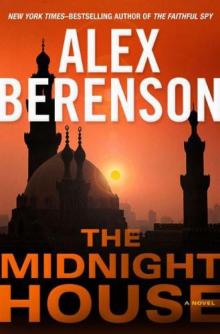 The Midnight House jw-4
The Midnight House jw-4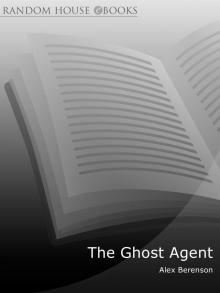 The Ghost Agent
The Ghost Agent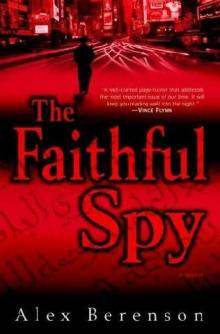 The Faithful Spy jw-1
The Faithful Spy jw-1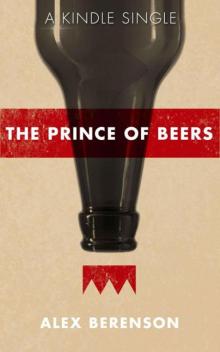 The Prince of Beers
The Prince of Beers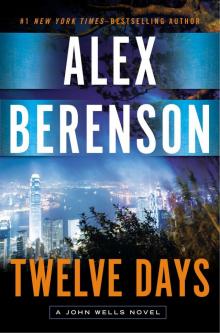 Twelve Days
Twelve Days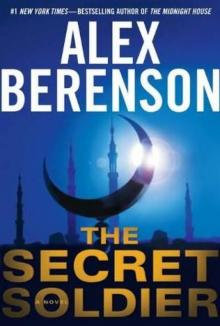 The Secret Soldier jw-5
The Secret Soldier jw-5 The Ghost War jw-2
The Ghost War jw-2 The Night Ranger
The Night Ranger